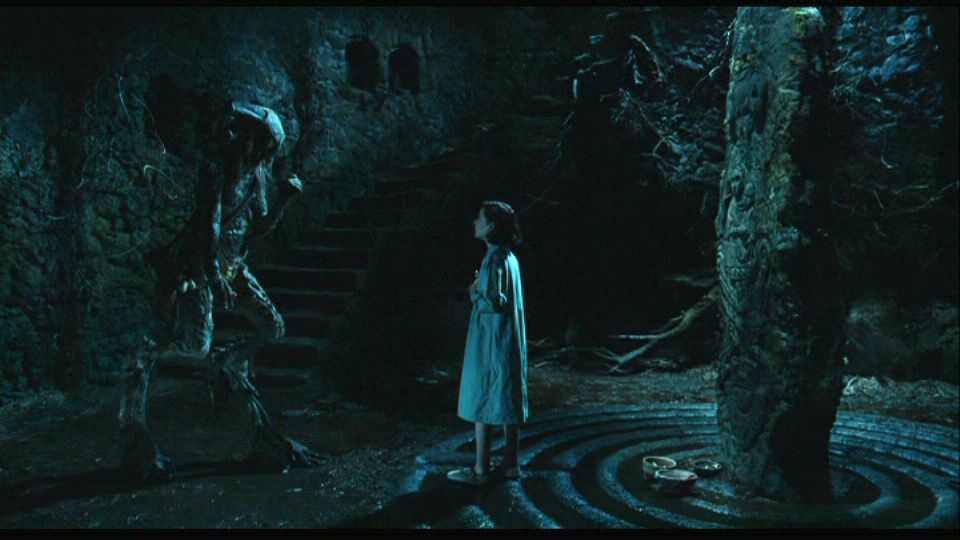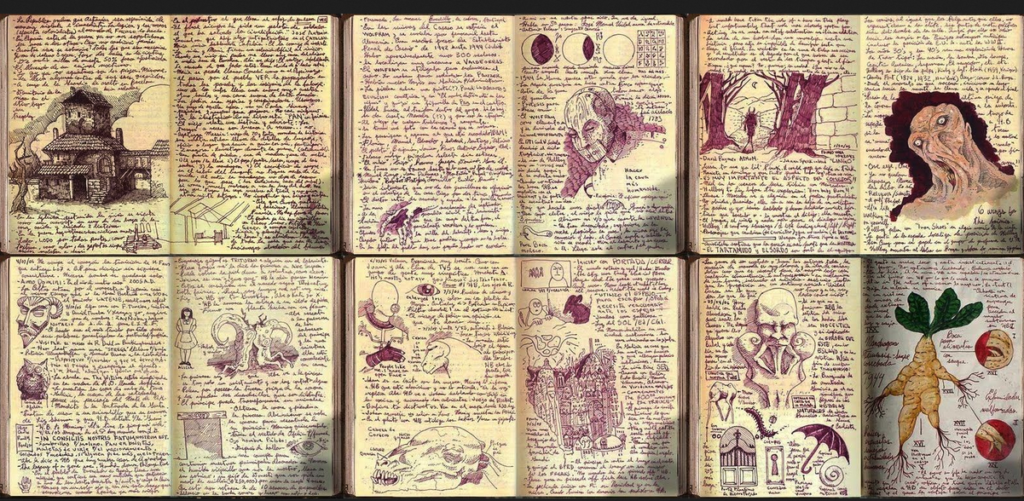by Fraser Hibbitt for the Carl Kruse Blog
The successive interweaving of the familiar and the fantastical marks Pan’s Labyrinth as a profound meditation on choice. Del Toro’s ‘dark fairytale’ was an attempt, a successful attempt, to, as the director says “uncover a common thread between the ‘real world’ and the ‘imaginary world’”. What begins as a search for this unifying thread finalizes as a dual narrative that harmonizes the film. It is not that the young girl Ofelia is escaping into a fantastical world to disown the Francoist association which has now been forced into her life, but that the fantastical is very much a part of that life – both the real and the imaginary intertwine to embellish Del Toro’s journey of becoming.
In a film rife with heavy symbolism and stylized creatures that force our attention into the imaginative realm, the viewer becomes entangled in the narrative arc. With each encounter, we realize the transformative effect of the imagination in much the same way as the creatures transform Ofelia into the girl she chooses to be. She has a choice in every meeting as we have a choice in embracing the powerful symbols and creatures that Del Toro presents to us.

Ofelia in Pan’s Labyrinth
It is somewhat akin to the creative process, this choosing between symbols that direct a narrative. If we think about the imagination and the role it plays in creating and being, Ofelia’s journey begins to be saturated with something familiar to us all. Firstly, imagination is playful. Perhaps the deepest kind of playful imagination we encounter regularly is the dream. In a dream, however, we are not in conscious control, at least not usually, but nevertheless, the dream illustrates the quintessence of play. Symbols, figures, locations and all such stuff we have experienced are able to blend, participate, and form novelties usually not thought of.
So too in the creative experience, we can form symbolic resonances from unseen places and bring them to life. It is not mere fancy, but an associative play between the experience of inward and outward life. It may seem arbitrary but when fully formed from the imagination, the symbol, saturated with association, becomes a beacon of meaning. It is also similar in how we think of ourselves and what actions we choose, imagination always comes into play. It nourishes hope, or the very opposite, terrifies us. After the act we come by meaning whether positive or negative.
Imagination directs us, then, to form our own ‘dictionary’, our own symbolic language by which we communicate with ourselves. It is just this dictionary that Ofelia forms through her encounters with the fantastical in Pan’s Labyrinth, a scheme of understanding choice and consequence. The fantastical elements are, in real time, confusing and obscure, as is our decision making towards events loaded with personal meaning; the fantastical jumps and flits, darting in and out of recognition – this is the viewer’s delight as we embrace the daring creatures of Del Toro.
Of course, imagination comes up against a certain ‘reality’. For Del Toro, the backdrop of the strife between the liberatory rebels and the fascism of the Francoist enclave load Ofelia’s story with intensity and immediacy. We cannot help but compare the competing realities and their inner tensions: Adult liberation and the innocence of a child becoming experienced. These dual themes are so deftly handled in the movie that they seamlessly dance throughout the entirety, threading and stitching the movie together.
I happened to have the chance of seeing an image of Del Toro’s notebook, just a few pages which were clearly dedicated to Pan’s Labyrinth. It was in this small excerpt of the notebook that so much of what I have been discussing seems to be functioning. The page is working as an active, creative mind. Thoughts are in process and associations, symbols, are being generated against the reality of the page. There are different styles of writing, lists, tangent thoughts, and beautifully sketched images in between the text. The imagination is searching and hinting, making itself manifest in whatever medium it feels most present. It is wonderfully resonant of Ofelia’s journey and the movie’s message, only condensed into these images of rational handwriting and fantastical sketching; the duality that colors the film.

Del Toro’s sketches for Pan’s Labyrinth
The movie is something special for Del Toro: “I’m doing this one my way, the whole way, no matter what. Financiers ran out on me and everyone involved in my career was saying it was the biggest mistake I could make”. It was his own choice as a director to carry on despite the signs around him. Knowing this and gazing back at the pages of the notebook, we see pages pregnant with personal and cultural meaning. Ofelia, also, decides against the insistence of the faun, deciding instead to give ‘birth’ to herself. Del Toro’s working method, then, is not a maze of associative play, but a labyrinth, which in his words, “is essentially a place of transit: an ethical, moral transit to one inevitable center”.
===============
The Carl Kruse Blog homepage is at https://www.carlkruse.com
Contact: carl AT carlkruse DOT com
Other articles by Fraser Hibbitt include Matthew Hopkins – Witches and Thoughts on Plague Literature.
The blog’s last post was on the tiny Sankt Anna chapel outside of Munich.
Also find Carl Kruse on Goodreads.
Long live imagination!
Long live it indeed!
Carl Kruse